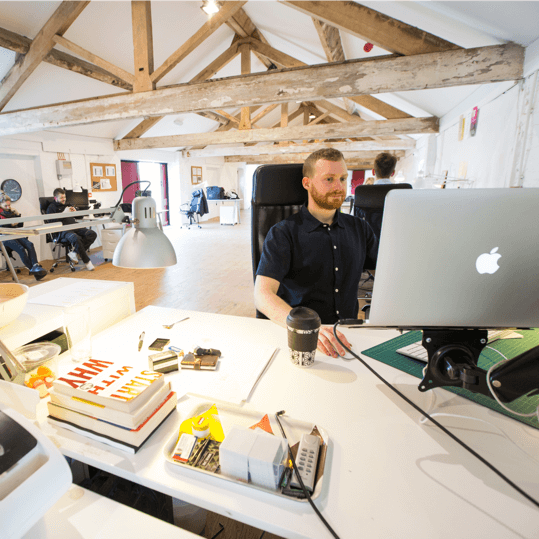Introduction
Justice principles to population health inequities are supported by social paradigms embedded in stratified systems. Social Inclusion is a figment of the imagination to many left desolate from hierarchical systems that assume no responsibility for their lack of advocacy for the most vulnerable. Albeit, several organizations exist to address these various inequities using a charity model that may only reach communities far in between. However, there is no warrant that shows the efficacy of these approaches. The Sustainable Development Goals (SDGs) address safeguarding the social protections of the elderly, incarcerated people, people with disabilities and the elderly. As an example, local laws are not properly monitored to ensure they are congruent with international laws as outlined in the SDGs or the United Nations Convention on the Rights of Persons with Disabilities (CRPD). In this report, the issue of social injustice through the social context of inequality, disability, social justice and gender discrimination for the incacerated people, people with disabilities and the elderly will be explored. Furthermore, the application of rehabilitation can be shared by these groups who are fervently fighting to be seen and heard in a policial chasm seeking to make decisions on their behalf, and limits community contributions in decisions made by governments. The limitations of these contributions can be observed in distant health systems incapable of serving these populations due to scarce knowledge or research on the challenges of these communities.
Censorship of Social Inclusion in Vulnerable Populations
The text presents an interesting fact that batterers cannot be distinguished from victims (Lombardi et al. 2019). In fact, mass incarceration has significantly increased since 1970 and has stored in its warehouse complex more African Americans than white counterparts. The racial discrepancy among these two groups has been disproportionately high given that Black males are arrested for minor drug offenses. In spite of the relentless advocacy from groups such as the Common Justice program by the Vera Institute of Justice (Drucker, 2019) to apply a just culture to prison reform initiatives, the psychological impact of these imprisonments on the families of the incarcerated remains as unhealed scars of the punitive systems established worldwide. Though, the sentencing laws of the United States reinforce racially-based criminology tactics that serve to punish offenders and their families.
Another group that faces undue discrimination in legal matters is the LGBT community. Their difficulties are reflective of a larger point at issue connected to the social deficiencies of our society to accept individuals with different lifestyles. One of the proposals to address this as NACCHO (Tibbs et al. 2017) has done is to partner with local communities to provide and develop learning tools while providing technical support. With that being said, the question is whether these ventures will ensue rigorous policy evaluation on providing decent living accommodations to remove socio political limitations for LBGT communities. The limitations of the textbook start in the beginning of the chapter on the enactment of legislation banning the criminalization of same gender sexual relations in 2003 by the U.S. Supreme Court. This assertion is misleading because the criminalization lingers in the thoughts and social consciousness of residents who do not apprehend the impact these small victories signify in the LGBT communities. It also does not delineate the process that led to the vertex of acquiring social justice in these communities.
Apart from LGBT communities, the elderly population are at a higher risk for noncommunicable diseases such as cardiovascular diseases, lung dysfunction or diabetes because of limited mobility and income shortage. Again, those who are poor and impacted by ageism face undue discrimination because of the scarcity of social services or zoning policies that cater to the poor health outcomes. Though the United States provides integrated long term care services to the elderly, these commodities are not afforded by similar demographics across the globe. In particular, women who are already financially disadvantaged are presumed to be dependent on male head of households. Unfortunately, this is not the case for single women heads of households who subsist on a singular source of income.
The common denominator level of social injustice experienced by incarcerated people, individuals with disabilities, LGBT people and older people is the social construct imputed based on the social classification of their environments. Most often, these groups do not have a political voice across governments. Across the board, poor health may not always be associated with where one resides even if resource-deficient communities are in many ways disabled from accessing culturally relevant and socially progressive health services. As an example, understanding the semantics of discrimination allows for the accurate evaluation on how these communities are segregated by race, class and gender. Surely, it’s a direct corollary to the access to health services amongst the elderly, the disabled, the incarcerated population and the LGBT community.
Of course, all these groups face discrimination because countries’ varied community policy stratagems. Though the United Nations Sustainable Development Goals (2015) formulated they would uphold social protections and universal health coverage through target 1.3 by implementing protection systems and coverage of the poor and the vulnerable. The need to boost economic profits is driving some financial companies to advocate for the privatization of healthcare (Wallace et al. 2019). When healthcare is privatized on the global stage, this reneges the social progress towards protecting these social interests for the common good. For one thing, the differing social classifications based on gender identities and gender presentations make it difficult to identify equitable and socially conscious health programs without the fear of not addressing another paradigm within the categorization of the LGBT spectrum.
As revealed in the text (Lombardi et al. 2019), the social construct of LGBT can be negotiated differently based on the cultural context. Thus, from one standpoint, legislative policies with specific protections against discrimination towards LGBT individuals will not necessarily minimize the social injustice impacting their state of well-being. It also cannot be denied that the Department of Defense’s ruling on allowing transgender people to serve in the military is a stepping milestone, however, the federal government continues to hold the upper hand on rescinding or advancing the rights of LGBT communities. As a whole, organizations that focus on the social factors including race, ethnicity and financial equity are admonished to advocate for socially inclusive policies. From a socioeconomic perspective, the lives of the poor in these seemingly different groups are at stake because they are at a higher risk to become destitute, and receive less education or marketable skills.
From a social justice standpoint, these individuals are seen as impaired and needing to be fixed in some shape or form, especially the elderly. The topic is analyzed through this angle because social exclusion is the main ingredient that is preventing sustainable change in these communities to escape inequalities. Not all member countries of the United Nations spend an astronomical amount on health care spending as the United States. Not only low income countries do not spend much on healthcare, the sustainable development goals only provide targets and not solutions on inaugurating integrative and participatory benchmarks for countries to demonstrate comparative analyses of social injustices between the LBGT, the elderly, the disabled and the incarcerated populations with their peers who are not affected.
Advocacy groups as the United Nations Convention on the Rights of Persons with Disabilities (CRPD) are relatively novel in their approach since it’s recent ratification because it does not outline how local regulations across all levels of society adhere to these international statutes (Groce, 2019). For example, by not regulating how local laws are implemented for these social groups, there will continue to be compounded high unemployment and institutionalization rates amongst people with disabilities. It can be contended, however, that technological advances such as 3-D printing is reducing the waiting time for disabled individuals to receive prosthetic equipment (Groce, 2019). Yet, there is no specification provided on whether these equipment are covered under health insurance policies, how many are available and the definition of low cost according to these companies. Again, there is no assurance that many could be able to afford such commodities unless provided under a charity model.
Undoubtedly, the LGBT community, the disabled populations, the elderly and incarcerated people need to be protected, especially in healthcare facilities. The overarching concern is whether society can find a middle ground in protecting these vulnerable populations without the shock wave of appearing to dominate the right of freedom of other groups who feel otherwise on the issue. Not only do these different groups need communal support, but also educating the mass population, legal, educational and health institutions on the specific challenges and social health factors could sway the political landscape for advocating on behalf of these groups. Advocacy groups are also reminiscent that federally funded studies must be broad in scope or content to address health measures in these specific communities.
In global legal systems including the United States, these populations are treated less than human. For instance, the disabled cannot choose health care insurance coverage; the LGBT community, specifically same-sex gender couples are treated inferiorly than heterosexual partnerships; the incarcerated must contend with structural racism associated with being former offenders. And, for the elderly population, large tax burdens are placed on their shoulders given reduced incomes. The universal application of the term rehabilitation can be applied to these groups trying to cultivate a political voice since the possibility of rehabilitation from these traumatic injustices is nearly unattainable.
Conclusion
It is possible for federally funded research to supply empirical knowledge on the social confrontations of the elderly, the LGBT community, persons with disabilities and the incarcerated. Again, more strict regulations on the discontinuity of these injustices must be in alignment with international laws on marginally policing the rights of these communities on a larger extent. Instead, social inclusion must be defined in a universal and socially conscious way to embrace the various realities of these populations across the various tiers of government. Most importantly, their political voices must be magnified to drive change that will withstand political and systemic upheaval.
References
1. Drucker, E. (2019). Incarcerated People. In Levy, B. S., & McStowe, H. L. (Eds.), Social injustice and public health (p.175-193). Oxford University Press.
2. Groce, N.E.. (2019). People with disabilities. In Levy, B. S., & McStowe, H. L. (Eds.), Social injustice and public health (p. 155-174). Oxford University Press.
3. Lombardi, E., & Bettcher, T. M. (2019). Lesbian, gay, bisexual and transgender /transexual people. In Levy, B. S., & McStowe, H. L. (Eds.), Social injustice and public health (p. 139-154). Oxford University Press.
4. Wallace, S.P.& Estes, C.L. (2019). Older People. In Levy, B. S., & McStowe, H. L. (Eds.), Social injustice and public health (p. 117-137). Oxford University Press.
5. United Nations. (2015). Universal Declaration of Human Rights. Available athttp://www.un.org/en/universal-declaration-human-rights/index.html. Accessed June 20, 2020.



